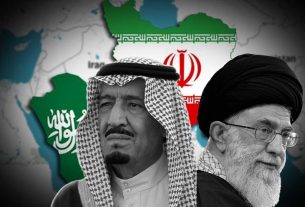Saudi Arabia is within months of completing its first nuclear reactor, new satellite images show, but it has yet to show any readiness to abide by safeguards that would prevent it making a bomb.
The reactor site is in the King Abdulaziz city for science and technology on the outskirts of Riyadh. The site was identified by Robert Kelley, a former director for nuclear inspections at the International Atomic Energy Agency (IAEA), who said it was very small 30-kilowatt research reactor, not far from completion.
“I would guess they could have it all done, with the roof in place and the electricity turned on, within a year,” said Kelley, who worked for more than three decades in research and engineering in the US nuclear weapons complex.

The satellite photos show that a 10-metre high steel tubular vessel, which will contain the nuclear fuel, has been erected, and construction work is under way on the surrounding concrete building.
Kelley said the main practical purpose of the research reactor would be to train nuclear technicians, but it also marked the crossing of a nuclear threshold. Before inserting nuclear fuel into the reactor, Saudi Arabia would have to implement a comprehensive set of rules and procedures, including IAEA inspections, designed to ensure no fissile material was diverted for use in weapons – something it has so far avoided.
“This reactor should be operational by the end of the year roughly,” Rafael Mariano Grossi, Argentina’s envoy to the IAEA, confirmed. “It depends on a number of factors. Invap is in charge of design. They are directing all the operations. But the local engineering is being done by the Saudis.”
The emergence of the satellite images, first published by Bloomberg, comes in the midst of a struggle between the Trump White House and Congress over the sale of nuclear technology to Riyadh, after it emerged that the US department of energy had granted seven permits for the transfer of sensitive nuclear information by US businesses to the Saudi government.
The secretary of state, Mike Pompeo, and the energy secretary, Rick Perry, have both stonewalled congressional committees demanding to know what the authorisations were for, and which companies were involved.





